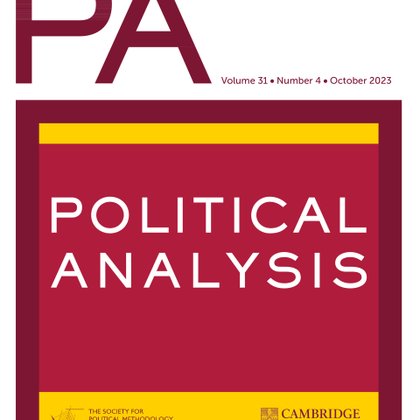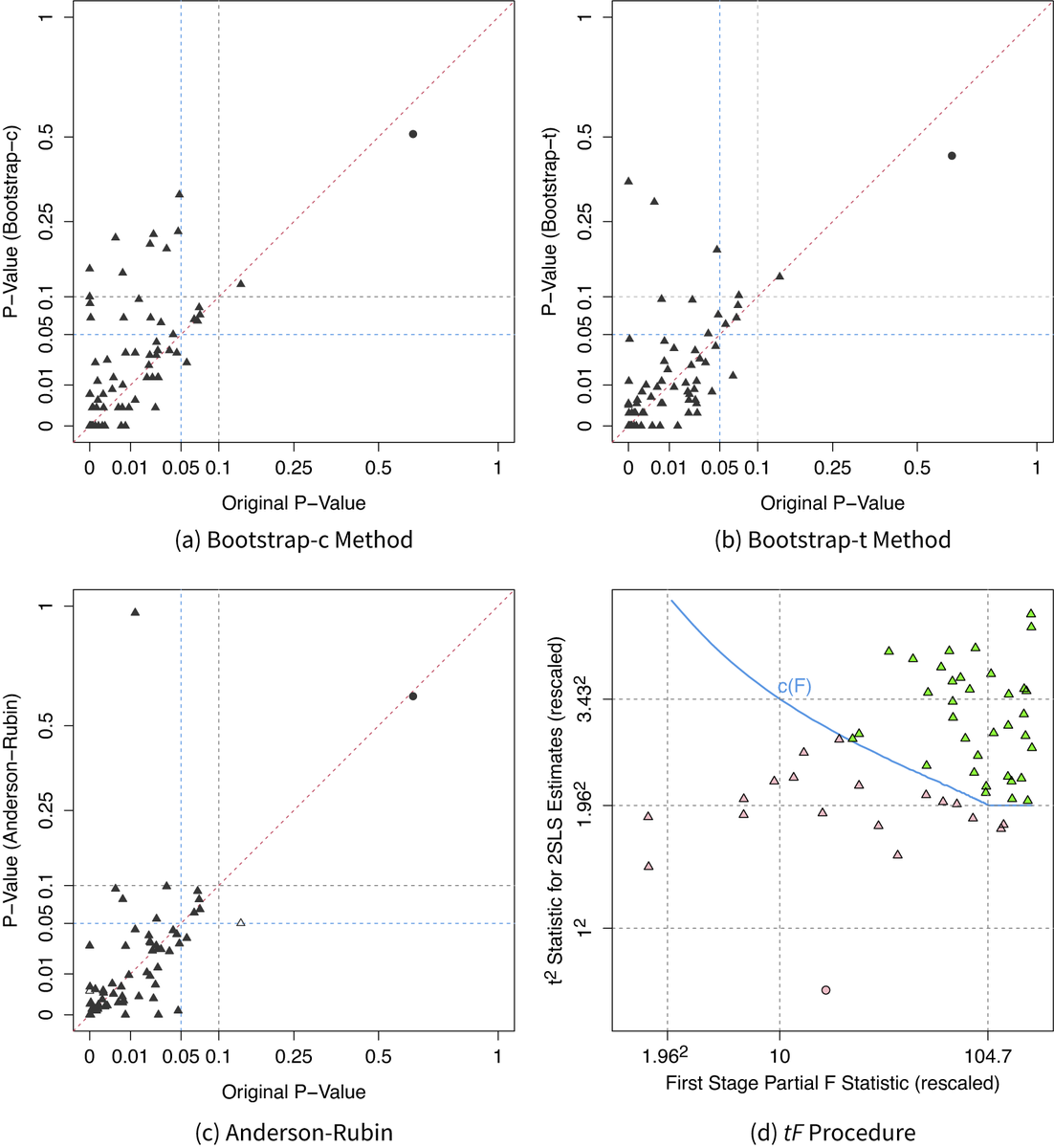
Political Analysis
@polanalysis
Followers
18K
Following
127
Media
56
Statuses
1K
Official Journal of the Society for Political Methodology
Joined September 2010
We're back! We are excited to share lots of new and exciting research with you all here and on our new Bluesky account. Find us at .
0
3
4
The authors discuss several potential uses for eye tracking data, including identifying inattention in surveys and measuring an item’s importance in a decision. They also provide starter code for analyzing eye tracking data. Read the full paper here:
cambridge.org
Attention and Political Choice: A Foundation for Eye Tracking in Political Science
0
1
1
Currently in FirstView: In “Attention and Political Choice: A Foundation for Eye Tracking in Political Science,” Libby Jenke and Nicolette Sullivan explain what eye tracking allows researchers to measure and how these measures are relevant to political science questions.
1
7
31
RT @CUP_PoliSci: #OpenAccess from @polanalysis -. Measuring Media Criticism with ALC Word Embeddings - . - @cbarrie….
0
9
0
They validate their findings using expert-, manifesto-, and poll-based estimates and show that ideological scores produced by LLMS closely map those obtained through expert-based evaluation. You can read the full paper here:
cambridge.org
Mapping (A)Ideology: A Taxonomy of European Parties Using Generative LLMs as Zero-Shot Learners
0
0
0
Currently in FirstView: “Mapping (A)Ideology: A Taxonomy of European Parties Using Generative LLMs as Zero-Shot Learners.” Riccardo Di Leo, @zengchen_, @EliasDinas, and Reda Tamtam see if ML can reliably obtain measures of ideological positions that match the validity of experts.
1
6
25
They use moral content in tweets as a case study, highlighting its ability to process texts missed by conventional dictionaries and its ability to produce measurements more aligned with crowdsourced human assessments. You can read the paper here:
cambridge.org
Constructing Vec-tionaries to Extract Message Features from Texts: A Case Study of Moral Content
0
0
2
Currently in FirstView: “Constructing Vec-tionaries to Extract Message Features from Texts: A Case Study of Moral Content.” @Zening_Duan, @anqishao_, @XiningLiao, @Kaiping_Chen, et al. introduce “vec-tionaries” which are embedding tools for measuring latent features of messages.
2
14
45
They show that PCRDs estimate the local average treatment effects for districts, not the effects of politician attributes. The paper also addresses confusion regarding PCRDs and offers tools for researchers using PCRDs. You can read the full paper here:
cambridge.org
Seeing Like a District: Understanding What Close-Election Designs for Leader Characteristics Can and Cannot Tell Us
0
0
7
Currently in FirstView: In “Seeing Like a District: Understanding What Close-Election Designs for Leader Characteristics Can and Cannot Tell Us,” @andrewbertoli1 and @chadhazlett examine the limitations of politician characteristic regression discontinuity (PCRD) designs.
4
23
82
Traditional F-tests can mask weak instruments and understate the uncertainty surrounding estimates from two-stage least squares. IV estimates are often larger than OLS estimates, whose biases they are designed to correct. The paper is open access here:
cambridge.org
How Much Should We Trust Instrumental Variable Estimates in Political Science? Practical Advice Based on 67 Replicated Studies - Volume 32 Issue 4
0
5
8
We are pleased to announce the 2025 Editors’ Choice Award for the paper “How Much Should We Trust Instrumental Variable Estimates in Political Science? Practical Advice Based on 67 Replicated Studies” by @Apoorva__Lal, @lockhartm, @xuyiqing, and @zu_gary.
1
34
145
RT @CUP_PoliSci: The latest winning article of the @PolAnalysis Editors' choice has been announced, find out more here - .
0
6
0
RT @CUP_PoliSci: #OpenAccess from @polanalysis - . Detecting Formatted Text: Data Collection Using Computer Vision - .
0
3
0
RT @CUP_PoliSci: #OpenAccess from @polanalysis -. Bin-Conditional Conformal Prediction of Fatalities from Armed Conflict - .
0
1
0
They use three experimental designs to derive bounds for interactions between the treatment and the moderator. Using this, researchers can assess the sensitivity of findings to both priming and post-treatment bias. You can read the full paper here:
cambridge.org
Priming Bias Versus Post-Treatment Bias in Experimental Designs
0
0
5
Currently in FirstView: In “Priming Bias Versus Post-Treatment Bias in Experimental Designs,” @matt_blackwell, Jacob Brown, @sophie_e_hill, Kosuke Imai, and Teppei Yamamoto analyze the trade-off between post-treatment and priming biases in survey experiments.
1
11
65
They illustrate this method by studying the relative importance of partisan, racial, gender, and religious identities. 30% of respondents offered random responses; not accounting for this affects substantive conclusions. You can read the full paper here:
cambridge.org
Addressing Measurement Errors in Ranking Questions for the Social Sciences
0
4
5
Currently in FirstView: In “Addressing Measurement Errors in Ranking Questions for the Social Sciences,” @Yuki_Atsusaka and @sysilviakim examine the statistical consequences of measurement error and introduce a framework for improving ranking data analysis.
1
13
40
Using simulations, the authors demonstrate MAUP-related inconsistency in regression results. This paper identifies both MAUP concerns and best practices. You can read the full article here:
cambridge.org
The Modifiable Areal Unit Problem in Political Science
0
0
1
Currently in FirstView: In “The Modifiable Areal Unit Problem in Political Science,” Dong Wook Lee, @MelissaZRogers, and Hillel David Soifer discuss the MAUP and how the size of spatial units and the location of their borders affect empirical results.
1
8
22











